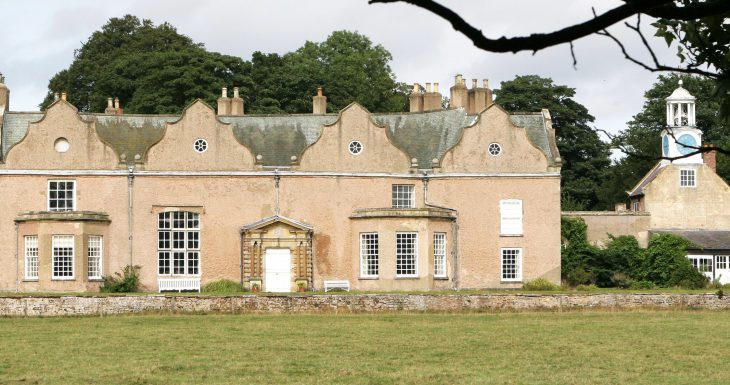Norton Conyers
Anglo-Saxon foundations to a house known now for its pink hue, Dutch gables and literary connections.
Wath, near Ripon, North Yorkshire, HG4 5EQ

- Accessible parking
- Accessible toilets
- Guide dogs welcome
Norton Conyers is a late medieval manor house with Stuart and Georgian additions.
First mentioned in Domesday Book in 1086 but recent discoveries suggest there was a habitation here in Viking times. It is one of the most complex timber-framed houses in the country and except for the twenty years between 1862 and 1882, has been in the Graham family since 1624. The family had important connections with the Stuart family; both Charles I and James II stayed here while travelling to Scotland. The house has been much loved and had a great deal of rebuilding and restoration. Many visitors have remarked upon its notably friendly atmosphere which we believe, results from so many years of occupation by the same family.
The exterior has distinctive Dutch-style gables whilst the interior contains fine 18th century plaster ceilings in the principal rooms, fine furniture, and accumulated family pictures, especially portraits and a famous John Ferneley hunting group, ‘The Quorn Hunt in 1822’.
The house has received many noteworthy visitors over the years including Charles 1 in 1633, James II and his wife in 1679 (the room and the bed they traditionally used are still on display), and Charlotte Brontë in 1839.
Charlotte Bronte’s ‘Jane Eyre’ link to Norton Conyers
Charlotte Bronte visited Norton Conyers in 1839 when the family to whom she was governess were in the vicinity. She was reportedly much interested by the family legend of a madwoman confined in an attic room during the previous century. (The room in question still exists, though inaccessible to visitors).
It is believed our madwoman became the original, or an original, of the mad Mrs Rochester in ‘Jane Eyre’, and the house, both inside and out, gave her many ideas for ‘Thornfield Hall’.
The discovery in 2004 of a concealed staircase connecting our main staircase landing to our attics, exactly resembling one described in the novel, aroused world-wide interest.
- Accessible parking
- Accessible toilets
- Guide dogs welcome
